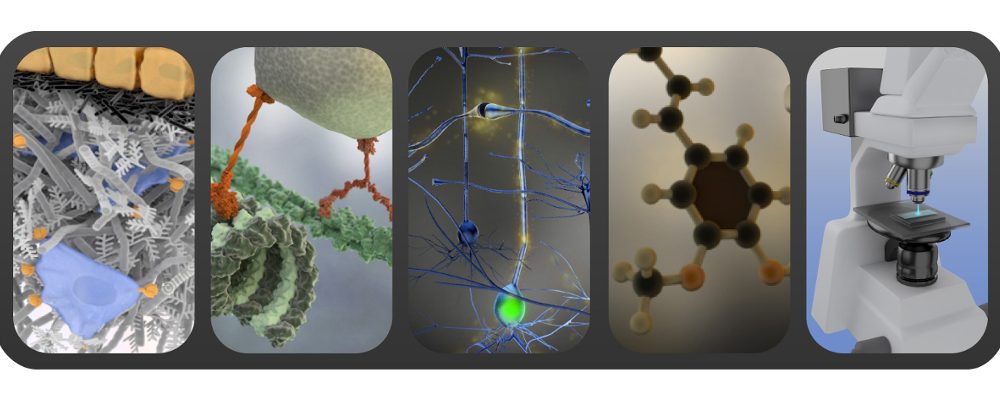Cosmetic addition or an essential part: what is the role of scientific illustration ?
Let’s address some of the misunderstandings concerning the role of scientific illustration. The scientific illustration is often uniquely identified with the images created in the context of science popularization. In consequence, it is often considered by scientists as a “dispensable addition” to science. However, the scientific illustration – broadly understood as visualizations, schematic representations, illustrations, animations … – has a way more varied use and role. This article would like to remind you of the important contributions of visuals in the scientific and other equally serious contexts.
In the context of scientific research, illustrations are created to formulate ideas of scientific hypotheses / theories / models. They are usually made by scientists themselves or with help of an experienced scientific illustrator. In this case, the role of the images is to help the process of thinking. These images are an important tool to form, select and fine-tune ideas as well as to provide a first step to communicating them in a fast and text-independent manner. They can be both, very schematic or highly elaborate. An advanced example of the latter is the use of 3D visualization tools to test, verify or complete a hypothesis concerning spatially and temporally dynamic processes in a molecular or cellular context. From my experience, the design of most of the scientific communications starts by creating / choosing figures that tell a coherent and convincing story. If the images present a clear and easy to follow story, this reflects the clarity of the underlying thoughts. The accompanying text then is relatively straightforward to write.
In the context of science popularization, images are created to communicate ideas to a larger public and are usually created by illustrators / artists. In this case, the images serve as carriers of scientific concepts for a broader audience. Their role is to grab the attention, quickly familiarize with basic ideas and help to remember them. These images are usually very eye-catching and spectacular but they are often less focused on conveying complexity and accuracy. Their big advantage is that they are usually language independent and hence more accessible. They are often based on or inspired by some versions of images obtained or created in a purely scientific context even if they seem very different.
In other serious contexts: medicine, forensic science, archaeology …
The role of the anatomical drawings was extremely important in exploring human and animal anatomy and remains a very powerful tool in medical context. Medical illustrations and animations are widely used in dedicated books, TV documentaries, teaching and training materials, communications with patients, and popularization magazines, to mention just a few. Moreover, highly specialized medical illustrations are used to plan in advance and execute complicated surgical operations like this example of conjoined twin separation.
Reconstruction and detailed visualization of, for example, wounds sustained by a victim of a crime or an accident are very helpful and can be decisive in forensic and legal context. Many historical and present examples show the importance of visual representations: mapping of cholera cases helped to clearly identify the contaminated source of water in London in 1854, some car insurance companies have accidents reconstructed in short 3D animations, and many forensic labs use routinely visualizations of crime tools, trajectories or wounds to better understand the presumed events.
Natural illustrations continue to be the golden standard despite the power of today’s photography. The reasons for it are numerous: illustrations allow to depict chosen specimen in high detail and unobscured by shadows or artefacts. A plant or an animal can be shown in all its forms in one image disregarding the current season or its age. A natural illustration has a synthetic and categorizing role as it can show an averaged out specimen. Hence it contributes to classification and description of the biodiversity.
Archaeological or palaeontological illustration of extinct civilizations or species play a great role in understanding our past and the evolution of our planet. With each illustration, a piece of our culture and the history is brought back to life and into our knowledge system. The fascinations with dinosaurs and ancient cultures would be difficult to explain without the work of illustrators, sculptors and animators who help make them tangible again. Of course, every illustration reflects the ideas and concepts that are believed to be valid at the moment of the illustration creation so they can become obsolete with the further progress of research.
This list is far from exhaustive but it should already prove that illustrations are an effective tool for science and other serious contexts. Far from being dispensable “additions”, they function as powerful vectors of scientific messages, concepts and theories within and outside of the scientific community. Their universal appeal can have a huge impact on how science and research are perceived in the society.
Further reading:
Rediscovering the forgotten benefits of drawing
If you like the content of this blog, sign up to receive the latest posts on graphic design for scientists directly to your inbox!
